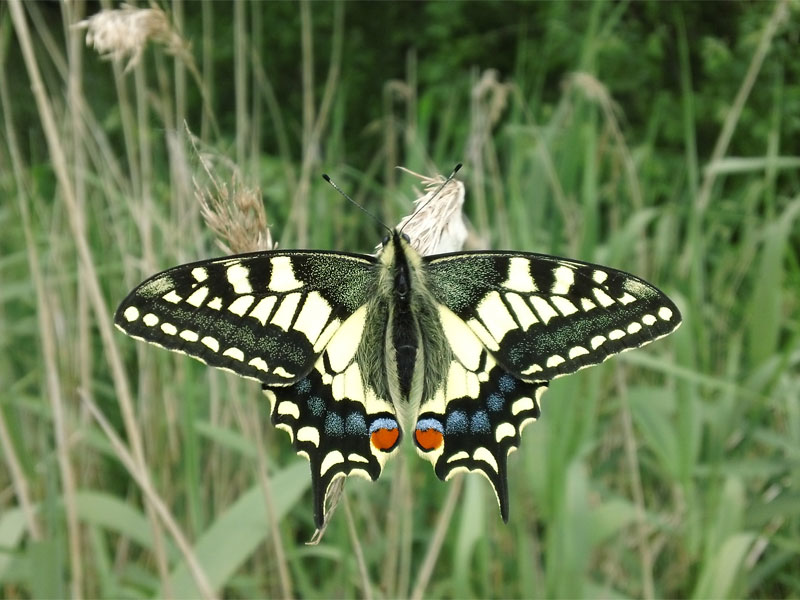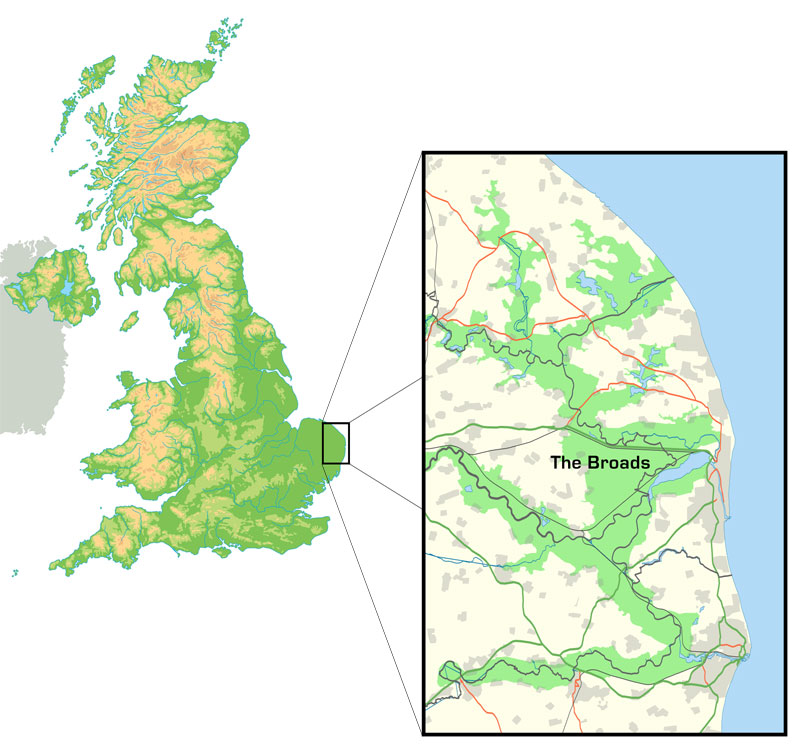
4th July 2018 Britain's biggest butterfly threatened with extinction by 2050 The British Swallowtail, a rare butterfly in the wetlands of eastern England, is threatened by rising sea levels, which could destroy its habitat within the next few decades.
The British Swallowtail (also called by its Latin name, Papilio machaon britannicus) is a rare subspecies of the Old World swallowtail (Papilio machaon), a more common and widespread butterfly that lives throughout much of the northern hemisphere. The International Union for Conservation of Nature (IUCN) does not list the Papilio machaon species on its 'Red List'. However, the British subspecies is confined to a small area of eastern England, so is endangered. With a wingspan of 9 cm (3.6"), the British Swallowtail is the country's largest and most spectacular butterfly. Unfortunately, its long-term survival has now been thrown into doubt, due to the effects of sea level rise. The insect's habitat lies entirely within the Norfolk Broads, a low-lying area of wetlands forming part of the East Anglia coastal region, illustrated below. At the caterpillar stage, its only food plant is milk-parsley, which cannot survive in saltwater. In pre-industrial times, the British Swallowtail was found on marshland across much of southern England. However, a series of enormous drainage projects caused its range to shrink drastically. It has since declined further, while attempts to reintroduce the species to the neighbouring county of Cambridgeshire have repeatedly failed. Conservation programmes are continuing in Norfolk – but although the butterfly appears to be secure in nature reserves over the short to medium term, its long-term outlook is bleak.
At a recent meeting of scientists from organisations including Butterfly Conservation and the Royal Entomological Society, it was heard that 1,500 species from the Broads are now of conservation concern. This includes 66 dependent on the area's major rivers and lakes for their survival. Future climate change projections were discussed and these indicate that almost the entire region will become saltwater marshes and estuaries later this century. This will be devastating to freshwater species, including the milk-parsley on which the swallowtail depends. "At least 90% of the current swallowtail breeding sites will become salt marsh with a sea level rise of 50cm," said Mark Collins, chair of the Swallowtail and Birdwing Butterfly Trust, a charity working to save the 500 swallowtail and birdwing butterfly species globally. "We could be looking at 30 or 40 years and these sites will be gone, given the rate of sea level rise and also tidal surges and 'salination events', where saltwater comes rushing up the Broads' rivers." Scientists at the meeting discussed ways in which the butterfly could be introduced to new, more secure sites across East Anglia. In January the government announced a 25-year plan to help the environment, including a nature recovery network and reintroduction of species. Moving the swallowtail "is the sort of thing these government resources should be put towards," according to Collins: "We can't stick our heads in the sand about this," he says. "The strategy has got to be a managed retreat, so we can keep this incredibly important species – our largest and most spectacular British butterfly." Ecologists will also need to understand better how to grow milk-parsley in the wild, he explains. Perhaps this could be done alongside genetic engineering or alternative methods. The story of the British Swallowtail is just one of countless others in the animal kingdom. A study in 2017 found a shocking 75% decline in flying insect biomass since 1989. These extinctions have cascading impacts on the rest of the food chain, along with knock-on effects for plant pollination. It is easy to give up hope when the situation appears so desperate and the trends are so alarming. However, we live during a very special time in history when our scientific and technological knowledge is growing exponentially. By working together and utilising the awesome powers at our disposal, it is possible that a turning point could be reached and a more sustainable world could begin to emerge. Whatever happens, it is clear that the 21st century will be a pivotal moment in the history of life on Earth.
Comments »
If you enjoyed this article, please consider sharing it:
|








